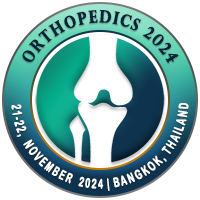
Stephen M. Howell
Orthopedic Surgeon at Adventist Health/Lodi Memorial, United States of AmericaTitle: Kinematically Aligned TKA: Understanding the Target, Accuracy, Balancing, Implant Survival, Clinical Outcomes
Abstract
Caliper verified kinematic alignment (KA) caused a paradigm shift in the alignment of total knee arthroplasty (TKA) that began in 2006. This presentation presents findings from peer-reviewed studies from the international scientific community showing better results than the traditional mechanical alignment (MA) philosophy; a 'one alignment fits few' approach instead of a personalized surgery. The presentation defines the KA targets for TKA. Emphasizes that KA requires caliper verification of femoral bone resections, and manual instruments more accurately perform the resections than all robotic platforms. The critical step in balancing the TKA and reducing undesirable outcomes, including chronic pain, stiffness, and instability, is to restore native medial and lateral tibial compartment forces, which KA does and MA does not. Regarding longevity, KA implant survival is comparable or better than MA. Finally, KA enables quicker recovery and better clinical outcomes than MA.
Biography
Stephen Howell’s clinical and research experience encompasses 42-years in the areas of total knee arthroplasty (TKA), anterior cruciate ligament (ACL) reconstruction, meniscal transplantation, and shoulder biomechanics. He is an Adjunct Professor of Biomedical Engineering at the University of California at Davis and collaborates with Distinguished Professor Maury L. Hull Ph.D. Together they conceived the concept of kinematic alignment for TKA in 2006. Kinematically aligned TKA is causing a paradigm shift in alignment philosophy worldwide because 11 of 13 randomized trials, case-control, and case series of bilateral TKA reported KA is better than MA. Dr. Howell has performed over 6000 calipered kinematically aligned TKAs since 2006, which is the largest clinical series and the most extended patient follow-up of this new alignment technique. They graduated 35 MS and 4 Ph.D. students in biomechanical engineering co-managed research grants from various sources, including the National Science Foundation, industry sponsors, and independent research foundations. He provided the surgical technique and documentation that enabled two implant companies to obtain FDA approval. He has published over 197 peer-reviewed studies and edited the definitive text on the technique written. He holds 31 US patents and 3 European patents. His Google Scholar h-index is 66, and i10-index is 163.

